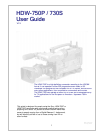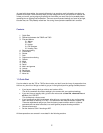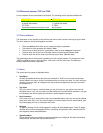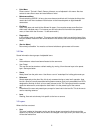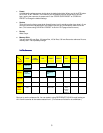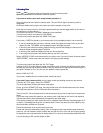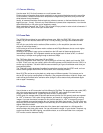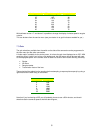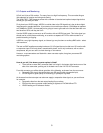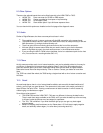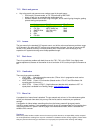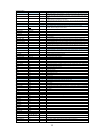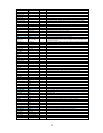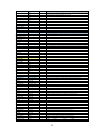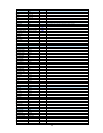7
*,& -+
Use the same ‘ALL’ file for all cameras on a multi-camera shoot.
Easiest method of keeping things colour matched is to use preset white balance and the same filter
on all cameras. (Unless of course colour temperature changes during the shoot, and you want the
white balance to stay the same.)
Ideally, all cameras should be checked against a reference camera, on the bench before the shoot
begins (yes,yes…I know). If there is any small difference in preset colour temperature, it can then be
offset electronically or VA gains can be tweaked to match.
When genlocking cameras, the ‘750 and ‘730 will read SD sync pulses in order to lock to timecode. If
doing a live HD mix, then tri-level sync must be used.
$
$
,
,
.
.
The HDCAM format allows for many different frame rates. With the HDW-750P, things are a little
simpler, as you can record at either 25P or 50i. Put very crudely, you’ve got film mode and video
mode.
25P will give you similar motion artefacts (flicker and blur ) to film acquisition (see also the next
section on use of the shutter.)
In 50i mode you will have the same motion artefacts as with Digital Betacam, but at a much higher
resolution of course.
Shooting at 25P doesn’t mean you’re excluded from the 24P world of theatre projection and
international distribution. 25P originated material can be played back 4% slow at 24P, in a kind of
inverse way to a 24fps movie going through a telecine at 25fps.
The ‘730S also offers two frame rates: 50i and 59.94i
There’s no progressive scan mode, so if you’re looking for a filmic look, ideally you’d use the 750P,
or F900. That’s not to say you couldn’t use the film effect process on 50i pictures from the 730S, in a
similar way to digi-beta….but with 1080 line source material you’ll get a much better result than you
would with digi-beta.
The 730s has a useful advantage if working for productions coming from the NTSC world, as it can
work at 59.94i (people often think of NTSC as 60Hz, but it’s actually 59.94Hz)
Most HD VTRs can be set to play back at a wide range of different speeds. If for instance you’ve
shot at 25P and you’re scanning back to 24fps film, your programme duration will be 4% longer, and
audio will be pitch shifted half a semitone down (though it can be electronically shifted back again
and re-layed if necessary).
/
/
-
-
Use of shutter on an HD camcorder is a little different to Digi Beta. The progressive scan mode (25P)
that is the most popular mode of operation on the HDW-750, really needs to be used with the
electronic shutter switched on. (Unlike Digi Beta, where it is rarely used).
In 25P mode, the camera takes 25 pictures per second (similar to a film camera) each one exposed
for 1/25
th
of a second. This is quite a long exposure, and results in a significant blurring of moving
images. If you use the shutter to expose for only half this period (i.e. 1/50
th
of a second) you get a
more acceptable compromise between blur (no shutter) and flicker (fast shutter). This isn’t really very
surprising, as you are acquiring images in the same way as a film camera normally would, with a 180
degree mechanical shutter.
As a general rule, a shutter speed twice that of the frame rate is equivalent to a 180 degree film
camera shutter and gives good results. You can still tweak the ‘angle ‘ of your shutter if required, e.g.
to eliminate flicker from 60Hz lighting, use a 60Hz shutter; or to eliminate flicker from a computer
CRT monitor, use the clearscan facility.



